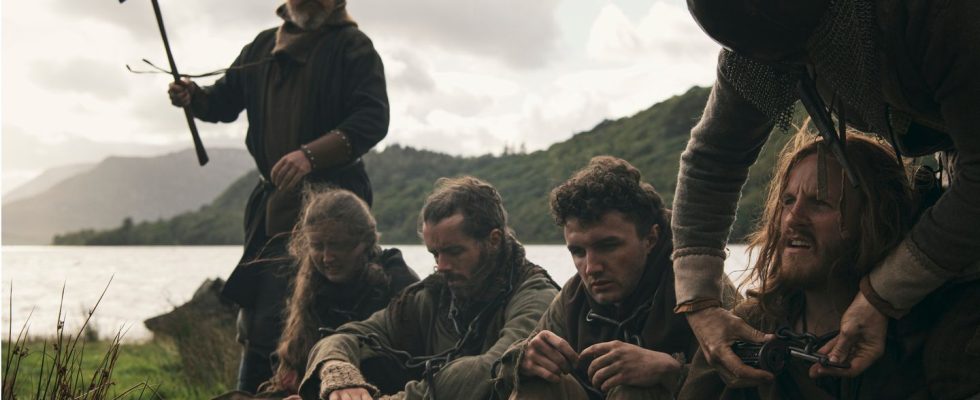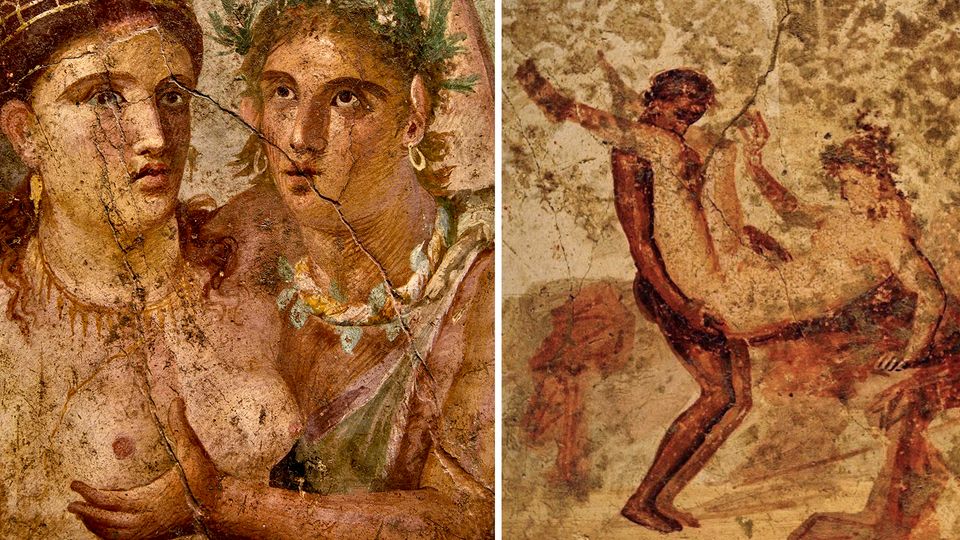middle Ages
Vikings as human traffickers – how an Irish nobleman freed himself from slavery
Scene from the documentary “In the clutches of the Vikings”
© Stefan Ludwig Film / PR
The Vikings stole young people all over Europe. Only one slave described his fate. The young Findan fell into the clutches of the slave traders because he wanted to buy his sister’s freedom.
In the realm of fantasy and TV series, the Vikings have risen far. In the films of the 1950s they were portrayed as bloodthirsty robbers who defiantly resisted noble Christianization. At that time they were seen as freedom-loving wildlings who refused to be oppressed by the church and nobility and whose wives did not fold their hands in humble prayer but preferred to hold a battle axe.
Something that gets missed is that the Vikings were a nation of traders, but they simply stole their best trade goods (“Worldwide slave trade – the dark side of the Vikings”). With the power of the Northmen, the slave trade also increased. There are only a few written sources from the time. Only one deals with the fate of a slave. It is described in the “Life of Saint Findan”. and shows how terribly the slave hunters plagued Europe at that time.
Findan is a young nobleman from Leister. His first encounter with the Northmen comes after they kidnapped his beloved sister from the village. At that time they haunted the coasts of Ireland with their fast boats. The island’s petty kings were constantly at war with each other. Instead of repelling the invaders, they allied with the strangers to harm their neighbors. The Vikings raided the village when most of the warriors were out hunting. Then they destroyed everyone who had no value to them. Teenagers, monks and women were particularly valuable. Free men and warriors were often killed because they were too unruly as slaves.
Across Europe
Findan was sent to ransom his sister. There were fixed places for the exchange of slaves. The most profitable export of blonde slaves was as far east as Byzantium and Arabia. The Arab geographer Ibn Fadlan was no stranger to slavery, but he was repulsed by the brutality with which the Vikings treated their prisoners. Rape was commonplace, and it was also common to sacrifice slaves to the gods. Another source tells of the Irish bard Moriuht and his family, who were captured by Vikings. The Vikings urinated on the captured Moriuht and then raped him together.
Ireland was a hub for this brutal trade. The Scandinavian Rudolf Simek considers Findan’s life story to be authentic because it was written by an Irish brother and many details about Scotland and Ireland are reproduced correctly. “In the slave trade, paying ransom is the ideal solution for both sides. The robbers didn’t have to transport the slaves far, the family gets the enslaved relative back relatively quickly,” he said in the TV documentary “In the Clutches of the Vikings.”
Although Findan had the silver ransom with him, the exchange went wrong. The Northmen did not release the sister. One can only speculate about the reasons. Maybe the girl was too beautiful to be given away. Perhaps her abilities as a healer were too valuable to pass up. Things didn’t go as planned, instead of getting his sister free, Findan was arrested and was supposed to be enslaved himself. That didn’t happen after all. Some Vikings did not want negotiators taken prisoner because it would undermine the ransom business. So Findan was released again.
Findan became a saint
But his freedom didn’t last long. Soon afterwards he was enslaved again and taken to the Orkney Islands. Then the future saint found himself in the next tricky situation. When the crew of his ship wanted to rest on the beach, other Vikings arrived. A deadly dispute quickly broke out because the families of the leaders were in blood feud with each other. The chained Findan picked up an ax and fought alongside his “owners”. His vita expressly emphasizes that he did not shy away from danger and wanted to be loyal to his master and even saved his life. This is how Findan regained his freedom. His turbulent life ended as a voluntary monk in the Swiss monastery of Rheinau. That’s why his life story, the “Vita Findani”, was recorded at all.
Fictionally spiced up
The TV documentary “In the Clutches of the Vikings” reconstructs the story of Findan and his sister using fictional elements by merging the sparse details about the sister from the vita with the figure of Melkorka. Her life is depicted in an Icelandic saga from the 13th century. The Irish Princess Melkorka was taken to Iceland as a slave. Women were sought after by settlers. Iceland was settled by Scandinavian men, but most of the women came from Ireland. They were all captured and kidnapped. Melkorka pretended to be mute in resistance to her slavery, and only after she bore a child to her owner was her noble family tree discovered.
Findan and Melkorka were enslaved, but ultimately treated somewhat decently. The fate of Findan’s real sister is unknown, it is quite possible that her life was far worse than Melkorka’s. In Ballateare on the Isle of Man there is the grave of a rich Viking with many possessions. Among his treasures was a young woman. She was killed with a blow to the skull and the body was then displayed with the other treasures. The slave was not buried at the Viking’s side, but was buried along with the bones of his animals.
Sources: “The Viking Slave Trade“, “In the clutches of the Vikings“.
Also read:
Worldwide slave trade – the dark side of the Vikings
The Return of the Valkyries – Norway’s military sends women to the front
Viking warrior women – the disowned Amazons from the north
Spears, gold and the proud posture of female warriors – this is how four Amazons were buried





